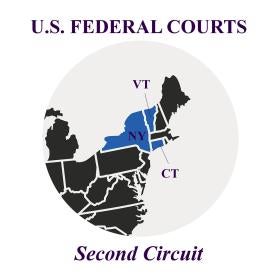On May 30, 2023, the US Court of Appeals for the Second Circuit released its long-awaited opinion addressing Purdue Pharma’s confirmed chapter 11 bankruptcy plan. Although the appeal challenged more than one aspect of the plan, the Court’s decision was highly anticipated for its discussion of one topic in particular: nonconsensual third-party releases.
IN DEPTH
THIRD-PARTY RELEASES
No subject in modern bankruptcy law is more hotly debated than third-party releases. The power of bankruptcy lies in its ability to discharge a debtor’s pre-bankruptcy debts and thereby provide the debtor with a coveted “fresh start.” However, bankruptcy has also been used to resolve the liabilities of third parties who share an interest with the debtor (e.g., equity holders, directors, officers and lenders). This quasi-discharge is effectuated by including provisions in a chapter 11 plan that bar creditors and other interested parties from asserting their direct claims against specified third parties once the plan is confirmed.
In most cases, third-party releases are consensual (e.g., where parties must affirmatively opt into the release) or at least deemed consensual (e.g., where parties receive the option to opt out). Although there is some disagreement regarding what constitutes “consent” for purposes of a consensual release, a plan’s inclusion of consensual releases is relatively uncontroversial. The real controversy arises when a plan imposes third-party releases and provides no ability to opt out. In such a case, a party would be precluded from asserting its own claims against the third parties following plan confirmation. That was the situation in Purdue.
Case law recognizes that nonconsensual third-party releases are problematic. These releases conflict with the notion that bankruptcy’s benefits are reserved for parties who file for bankruptcy and, in doing so, subject themselves to the bankruptcy process and everything it legally entails. Accordingly, in some jurisdictions, nonconsensual third-party releases are strictly forbidden. Other jurisdictions permit such releases, but even those courts acknowledge that they represent the exception, not the rule, and are only appropriate in limited circumstances.
PURDUE’S CHAPTER 11 PLAN
One jurisdiction that has historically permitted nonconsensual third-party releases is the Second Circuit, which encompasses courts in the Southern District of New York (where Purdue filed its chapter 11 case). Purdue’s financial troubles stemmed from its production and sale of OxyContin, a powerful painkiller that has been cited as a major cause of the opiate epidemic. In the wake of this public health emergency, innumerable lawsuits were filed against Purdue for its role in the crisis. Significantly, though, this litigation implicated not only Purdue itself but also the Sackler family, who owned and operated the company for decades.
After filing for bankruptcy, Purdue submitted and the US Bankruptcy Court for the Southern District of New York ultimately confirmed a chapter 11 plan that comprehensively addressed the company’s opiate-related liabilities. The plan, however, went a step further and released certain civil claims against the Sackler family as well. In exchange for receiving this release, the Sacklers agreed to contribute billions of dollars to the bankruptcy as part of a global settlement. Despite the unprecedented size of the Sacklers’ contribution, the plan was opposed by the US Trustee, certain Canadian municipalities and indigenous tribes and various individual creditors.
After the bankruptcy court confirmed the plan and its release of the Sacklers, the bankruptcy court’s ruling was appealed to the district court. In that initial appeal, the district court held that bankruptcy courts have subject matter jurisdiction to approve third-party releases but lack statutory authority to do so under the US Bankruptcy Code. On that basis, the district court vacated the bankruptcy court’s confirmation order.
THE SECOND CIRCUIT OPINION
The district court’s ruling was then appealed to the Second Circuit. The Second Circuit found that the outcome of the appeal turned on two questions:
-
Does the Bankruptcy Code permit nonconsensual releases of claims against non-debtor third parties through a chapter 11 plan?
-
If so, were the releases proper given the facts and circumstances of Purdue’s case?
The Court held that the answer to both questions was “yes.”
The Second Circuit first considered whether the bankruptcy court had subject matter jurisdiction over the released claims. A bankruptcy court has broad jurisdiction over matters that might have a “conceivable effect” on the debtor’s bankruptcy estate. The Court found that the released claims were likely to affect the bankruptcy estate because the claims were closely related to claims that the bankruptcy estate itself possessed against the Sacklers and subject to an agreement requiring Purdue to indemnify the Sacklers. This nexus between the released claims and the bankruptcy estate was sufficient to confer jurisdiction to the bankruptcy court.
Next, the Second Circuit considered whether the releases were statutorily authorized by the Bankruptcy Code. The Court pointed to two Bankruptcy Code provisions as supporting the inclusion of third-party releases in a plan: Sections 105(a) and 1123(b)(6). Section 105(a) codifies a bankruptcy court’s equitable authority to “issue any order, process, or judgment that is necessary or appropriate to carry out the provisions” of the Bankruptcy Code. Section 1123(b)(6) allows a chapter 11 plan to “include any other appropriate provision not inconsistent with the applicable provisions” of the Bankruptcy Code. The Court determined that these two broadly worded provisions, working in tandem, provided the necessary statutory basis for a plan’s inclusion of third-party releases. The Court bolstered its ruling by reference to prior Second Circuit case law and the decisions of its sister circuits.
After concluding that the Bankruptcy Code does permit third-party releases in plans, the Second Circuit turned to the issue of when such releases are appropriate. On this question, the Court articulated seven non-exclusive factors for courts to consider when determining whether to approve a nonconsensual third-party release:
-
Whether there is an identity of interest between the debtor and the to-be-released party (such as an indemnification relationship) such that a suit against the non-debtor is tantamount to a suit against the bankruptcy estate
-
Whether claims against the debtor and non-debtor are “factually and legally intertwined”
-
Whether the scope of the release is appropriate (e., whether its “breadth” is “necessary to the Plan”)
-
Whether the releases are essential to the reorganization and not an attempt by the third party to manipulate the process for its own advantage
-
Whether the non-debtor party receiving the release contributed substantial assets to the reorganization
-
Whether the impacted class of creditors “overwhelmingly” support the plan and its releases
-
Whether the plan provides for the fair payment of enjoined claims.
The Second Circuit derived these factors from its own case law as well as several leading cases from other jurisdictions, including the Sixth Circuit’s decision in the Dow Corning Corporation bankruptcy and the Bankruptcy Court for the Western District of Missouri’s “widely cited” decision in In re Master Mortgage Investment Fund. Finding that these newly articulated factors supported the Sackler release, the Second Circuit reversed the district court’s ruling and held that the bankruptcy court properly approved the plan and releases.
Circuit Judge Richard C. Wesley filed his own opinion, which is best described as a reluctant concurrence. He found that the outcome was dictated by existing Second Circuit case law that had not been overruled by either the full Court of Appeals or the Supreme Court. After acknowledging that the majority opinion aligned with existing precedent, Judge Wesley proceeded to explain the myriad of issues with nonconsensual third-party releases that have led some courts to disallow them entirely.
Judge Wesley found that the “statutory footing” for third-party releases was questionable and emphasized that third-party releases deviated from bankruptcy’s general purpose: to modify the debtor-creditor relationship, not the relationships between third parties. He also pointed out two important aspects of the releases in the Purdue plan that he viewed as troubling. First, the releases provided to the Sacklers were even broader than the discharge a bankruptcy debtor could receive because the Bankruptcy Code prohibits debts arising out of fraud from ever being discharged, but the third-party releases in the Purdue case had no carveout for fraud. Second, Judge Wesley highlighted that under the terms of the Purdue plan, claimants are not entitled to any recovery on account of the release of third-party claims—claimants are receiving a recovery only on account of claims against the debtors.
Finally, Judge Wesley pointed out that because federal circuits are split on this issue, whether a non-debtor can be released nonconsensually under a plan is currently determined by geography. This state of affairs conflicts with the US Constitution’s directive that Congress establish “uniform” bankruptcy laws. Given the magnitude of this issue, which has divided courts for decades, Judge Wesley observed that the question is ripe for review by the Supreme Court.
TAKEAWAYS
In one sense, the Purdue opinion is not particularly groundbreaking. Nonconsensual third-party releases were permissible in the Second Circuit before this decision, and they remain permissible after it. Yet, despite not fundamentally shifting the landscape, this opinion is a critical addition to case law because the Court established a clear framework for evaluating nonconsensual third-party releases. Bankruptcy courts have received minimal guidance from appellate courts regarding how to analyze such releases. This lack of circuit-level precedent makes the Second Circuit’s articulation of specific relevant factors especially important. And although the decision is not binding outside the Second Circuit, it is safe to say that courts in other jurisdictions will look to this decision as persuasive authority.
The significance of this decision is magnified by the fact that bankruptcy courts have become the go-to venue for resolving mass tort liabilities, as was the case in Purdue. Mass tort bankruptcies almost invariably involve significant claims against non-debtor third parties, making the propriety of third-party releases a critical inflection point. The Second Circuit’s analysis of third-party releases will undoubtedly be front of mind as parties in similar cases try to craft solutions to comprehensively resolve these types of complex and multifaceted disputes.





 i
i


